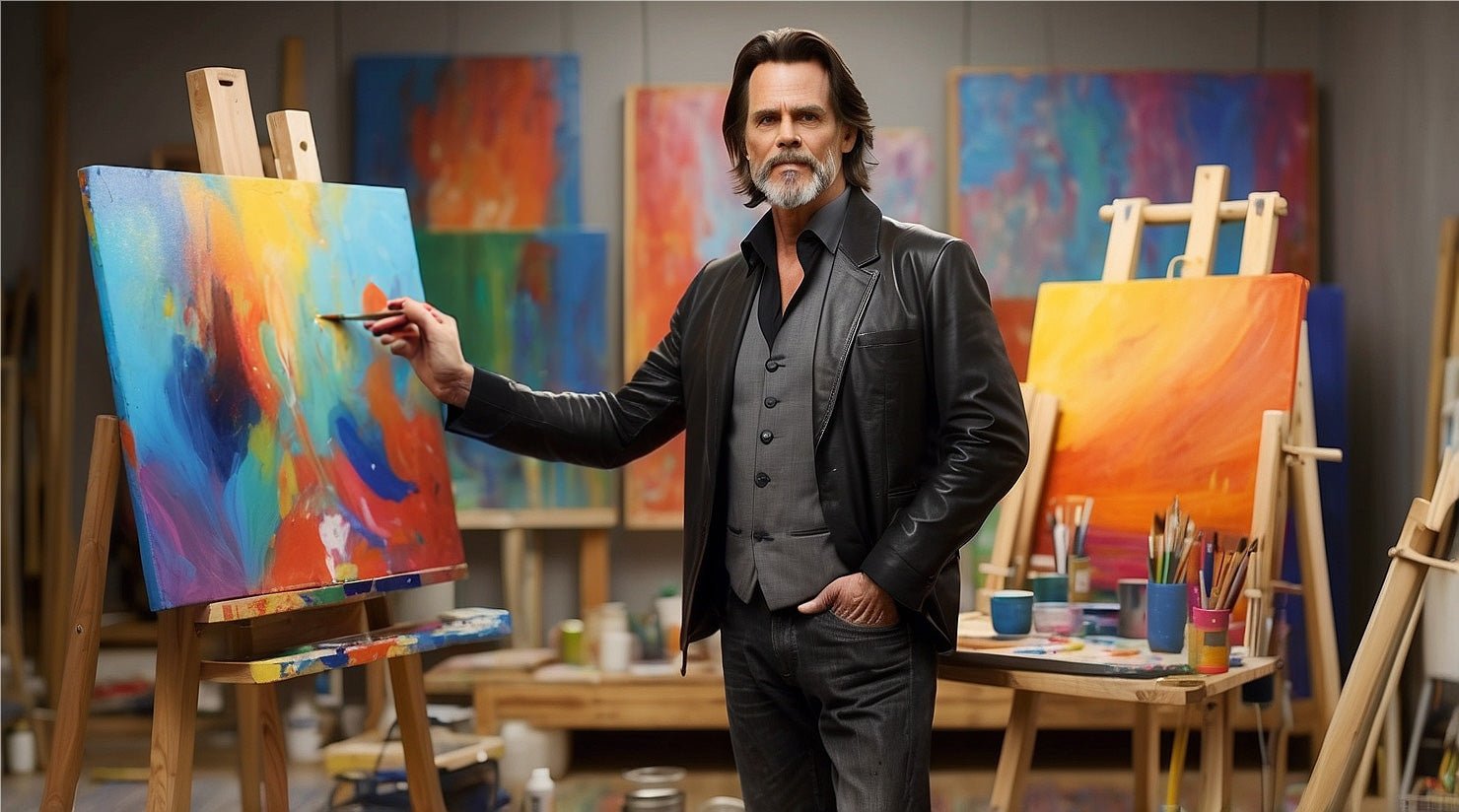
Art History 101: 18th Century Western Art
Introduction
The 18th century was a time of enormous artistic and cultural growth in Western Europe. Artists like Rembrandt, Vermeer, and Fragonard brought new techniques to their work, as well as a renewed emphasis on beauty and emotion in art.
This period saw huge advancements in the development of portraiture, landscape painting, still life painting (which is kind of like painting flowers or fruit), murals (big paintings that are painted onto walls), gilding (painting gold onto something), etching (etching ink into copper plates to make prints), watercolors (a type of paint that dries quickly) — every kind of art there was except maybe sculpting. It was also the first time since ancient Greece that there were more female artists than male artists working professionally!
Immanuel Kant
Kant was a German philosopher who studied at the University of Königsberg. He is most famous for his work "Critique of Pure Reason," which was published in 1781 and argues that all knowledge comes from experience. Kant's philosophy emphasized reason over faith, which made him a champion of Enlightenment ideals—and earned him a reputation as one of the most influential philosophers in history.
Kant's philosophy has had a lasting influence on Western thought and is still studied today. He believed that we can only understand things by comparing them to our own experiences, which means that there are certain limits to what we can know about the world around us.
William Hogarth
The 18th century was a time of great change, as the political and social climate of Britain shifted dramatically. For example, in 1714, King George I of Hanover ascended to the British throne and established his dynasty in England. The Union of Scotland and England created Great Britain. All this eventuated from an inheritance crisis following Queen Anne's death without heirs in 1714.
To some extent, it's possible to see these developments reflected in Hogarth's work: he was often critical of the social classes who profited from their position at the expense of others (while also being unable to escape his position). One example is A Harlot’s Progress (1732), which showed how a young woman gained wealth by selling her body—and ultimately lost everything due to her immorality.
The Enlightenment
The Enlightenment was an intellectual movement that took place in Europe during the 18th century. It was a reaction to the religious and political upheaval of the previous century, and based on reason and science rather than faith. The Enlightenment is also associated with modernity, which describes a new way of living life as well as a change in values.
The Enlightenment began when philosophers realized that they could apply reason to scientific investigation and logic to everyday life. They formed a new lifestyle where they started questioning everything around them instead of accepting things at face value: “There must be an explanation for why this happened” became their motto.
The Enlightenment began in France and spread to other countries, including Britain. It was a time of political upheaval as well. The American Revolution was fought by colonists who wanted independence from Great Britain, and the French Revolution took place when French citizens overthrew their king and queen. Hence why artworks are centered on this event.
French salon style art
The paintings of French salon-style artists were characterized by an interest in nature and a tendency to portray everyday life. The subject matter of their work also included mythology and history, similar to the Neoclassical movement that preceded them.
The British school was more interested in realism than the French; they painted everyday scenes using light and shadow to create an illusion of being present in the scene depicted. In contrast, French painters used lines and curves instead of shadows to create depth in their works—they didn't emphasize creating a realistic viewpoint so much as they did portraying emotion through color and brushstroke techniques.
Over time, this style evolved from its original roots into something more recognizable as Impressionism: A group of painters who depicted natural scenes but did so with very loose brushwork rather than precise details like earlier artists had done.
Neoclassicism
Neoclassicism was a style of art that emerged in the late 18th century and looked back to ancient Greece and Rome for inspiration. Neoclassical artists were inspired by Greek and Roman art, which they studied through books like Winckelmann’s History of Ancient Art (1764). In addition to being an important scholar on classical art, Winckelmann also published books about specific works of classical sculpture; his book on The Laocoon (1765) is considered one of the first modern books on art history.
Neoclassicism was a reaction against the Rococo style popular in France during this period. Rather than focusing on elaborate ornamentation, Neoclassical artists focused on nature and simplicity; they believed these qualities were more appropriate for modernity than Rococo's frivolity.
Jacques-Louis David
- Jacques-Louis David was a French painter born in 1748, who died in 1825.
- He was the leader of the neoclassical movement during his lifetime and is often considered one of the greatest artists of all time.
- His work is still very popular today.
He was a very prolific artist and created over 900 paintings, 1000 drawings, and 100 sculptures. His most famous works include The Death of Marat, The Coronation of Napoleon, The Oath of Horatii, and Liberty Leading the People.
Romanticism
Romanticism is a 19th-century artistic, literary, and intellectual movement that originated in Europe. It emphasized intense emotion and nature.
Romanticism was a reaction against the rationalism of the Age of Enlightenment. The Romantics rejected what they saw as being forced upon them by society, such as rationality, morality, and reason. They believed that man's relationship with nature should be one of intense feelings rather than scientific investigation.
Jean-Auguste Dominique Ingres
Jean-Auguste Dominique Ingres was an 18th-century French painter and sculptor, known for his portraits and historical scenes. He was born in Montauban, France on 29 August 1780 and died on 14 January 1867 in Paris.
Ingres is considered to be the last great painter of the Neoclassical period, which spanned from around 1755 to 1850. His work was heavily influenced by the French Revolution, especially its rejection of all things old-fashioned or aristocratic (such as many elements found in Baroque).
He was also heavily influenced by ancient Greek art, which he studied extensively in Italy. His paintings were often characterized by a simple style and classical subject matter, but his attention to detail and focus on the human form made him one of the most important artists of the period.
Thomas Gainsborough
Thomas Gainsborough was born in Sudbury, Suffolk, and studied under Jonathan Richardson in London. He is best known for his portraiture of wealthy patrons and the English countryside—in particular, landscape paintings such as A Country Lane (1752).
Gainsborough's work reflects a change from Rococo to Neoclassical styles during the 18th century. His subjects are often richly attired in elegant country clothing that highlights their wealth and status; often, he included recognizable landmarks such as manor houses or trees to give further context to his portraits.
Art in the 18th century in Western Europe was influenced by neoclassicism and romanticism. Jacques-Louis David and Jean-Auguste Dominique Ingres were key artists during this period.
In 18th-century Western Europe, neoclassicism and romanticism were dominant. Both movements reacted against the excesses of both the baroque and rococo styles in art. Neoclassicism was a style first developed by French artists in reaction to the lavish, ornate pieces produced during the reign of Louis XIV (1643-1715). These artists wanted to return to a more classical style that emphasized restraint and order. They rejected rococo for its excessive use of color, decoration, and ironic themes.
Romanticism was also born out of dissatisfaction with neoclassicism. Romantic artists believed that it did not express emotion enough or allow self-expression through painting; instead, they focused on stories from history or literature as inspiration for their works. The two styles often clashed because each side thought their depiction of figures was superior—neoclassical artists believed they depicted truth while romanticists presented truth as beauty over factual accuracy.
Conclusion
In the 18th century, Western European art was influenced by neoclassicism and romanticism. Many artists used classical themes to express their ideas, while others focused on nature and emotion as they explored new styles. These trends would continue into the 19th century, but during this period, we can see a shift from neoclassical realism toward romantic idealism.
Some important artists include Immanuel Kant, William Hogarth (the father of modern British art), The Enlightenment philosophers who were inspired by classical Greek architecture like Neoclassicism in France or Romanticism in England.





